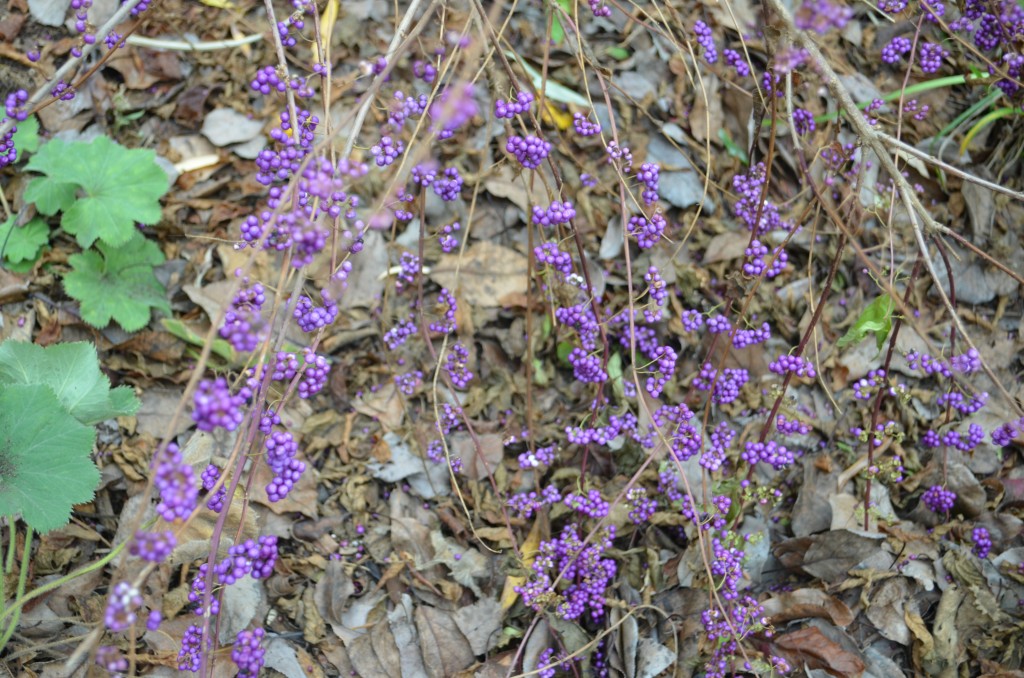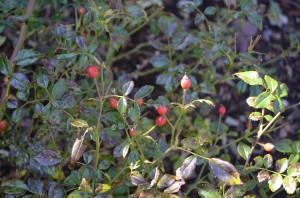at least not here in the Burrow. In October for the first few years we lived here I suffered some pretty serious tree envy. All of New England is just glowing with burnt orange, deep yellow and fiery reds, until you drive into my neighborhood. I live in a new development built on a sand pit so there were no trees in existence, and the builder planted maples and Bradford Pears left a lot to be desired. As time went by people starting planting trees and more importantly the trees started growing enough to give them some prominence, but then the twin tragedies of the ’08 Ice Storm and the ’11 October Blizzard and those same trees were devastated.
Luckily for me, I had been busy planting lots of shrubs and perennials that show off show pretty rad colors in the fall, so even though my trees are not co-operating in the bucolic New England scenery thing, it is pretty darn colorful here.
In the shrub department summersweet ‘clethra alnifolia’ turns vivid yellow in the later part of the season, positively lighting up the border in the Dog Garden.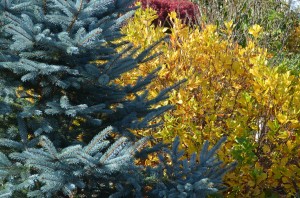
Fothergilla’s ribbed leaves seem to smoulder as they turn from bluish -green to burnt orange and reds.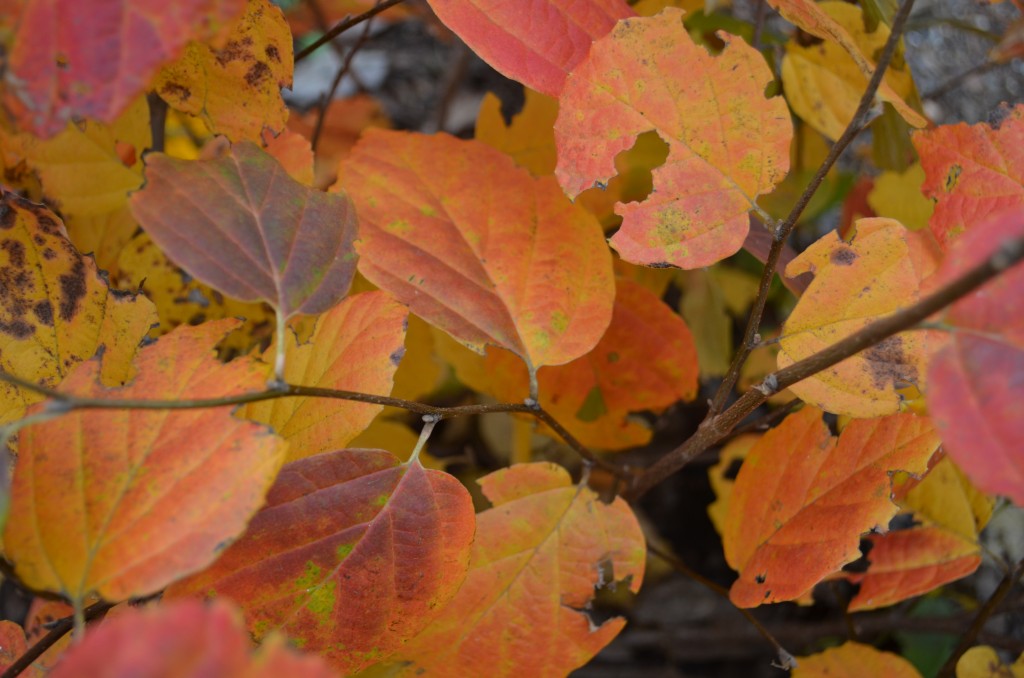
My neighbor has a hedge of burning bush ‘euonymous alata’ ( now on the invasive plant list here in MA) which backdrops my garden and I can enjoy guilt free since I did not plant it.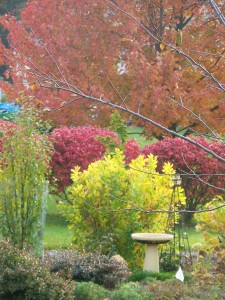
,
,
,
,
,
,
,
,
,
,
,
,
Lilac “miss kim’ has lovely disease free leaves all season long, then turns burgundy for fall.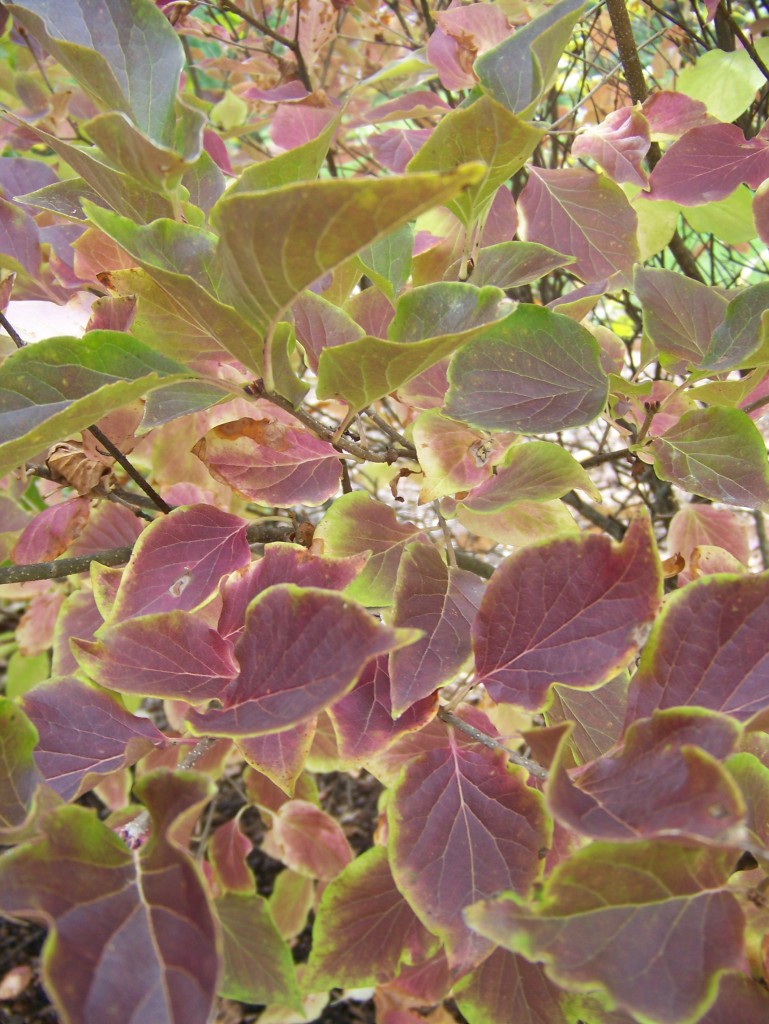
The rugosa roses all turn yellow,azeleas jump on the color turn wagon, the ninebarks change their color make-up almost daily , as do the new spireas ‘big bang’ and double play’.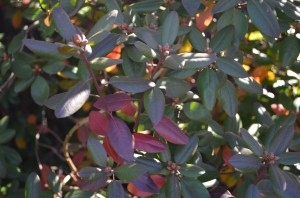
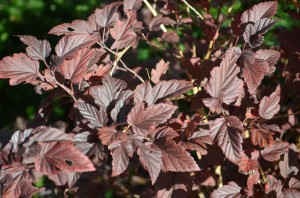
.
.
.
.
.
.
.
.
..
As for perennials, platycodon’s ( or balloon flowers) leaves turn first yellow then morph into a burgandy- yellow mix and persist well after the first few frosts have leveled mostly everything else.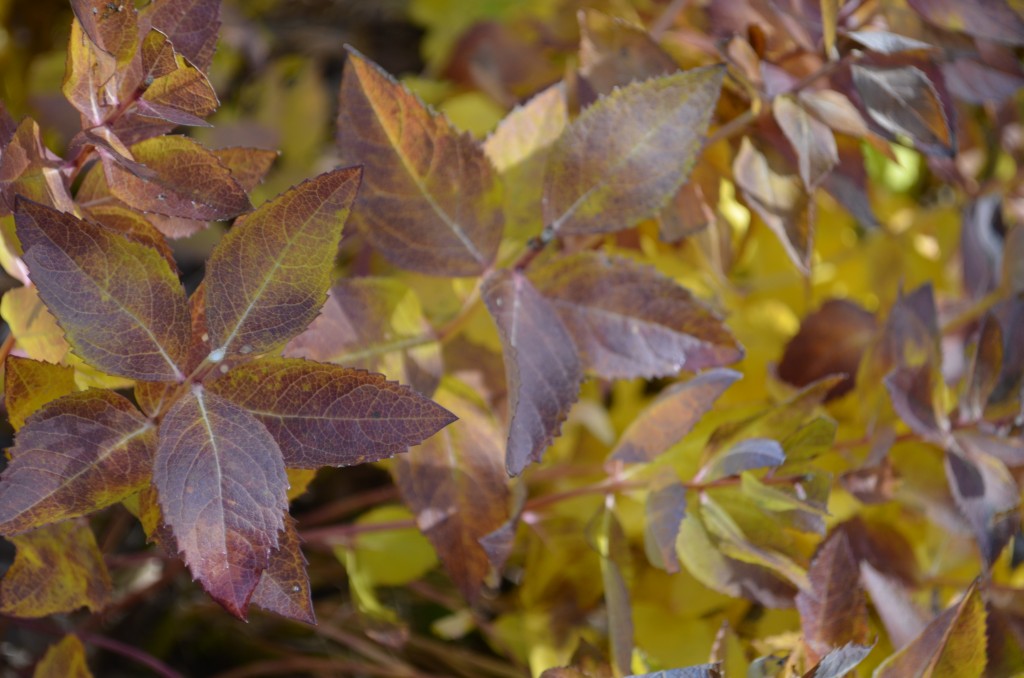
sedums always contribute greatly to the show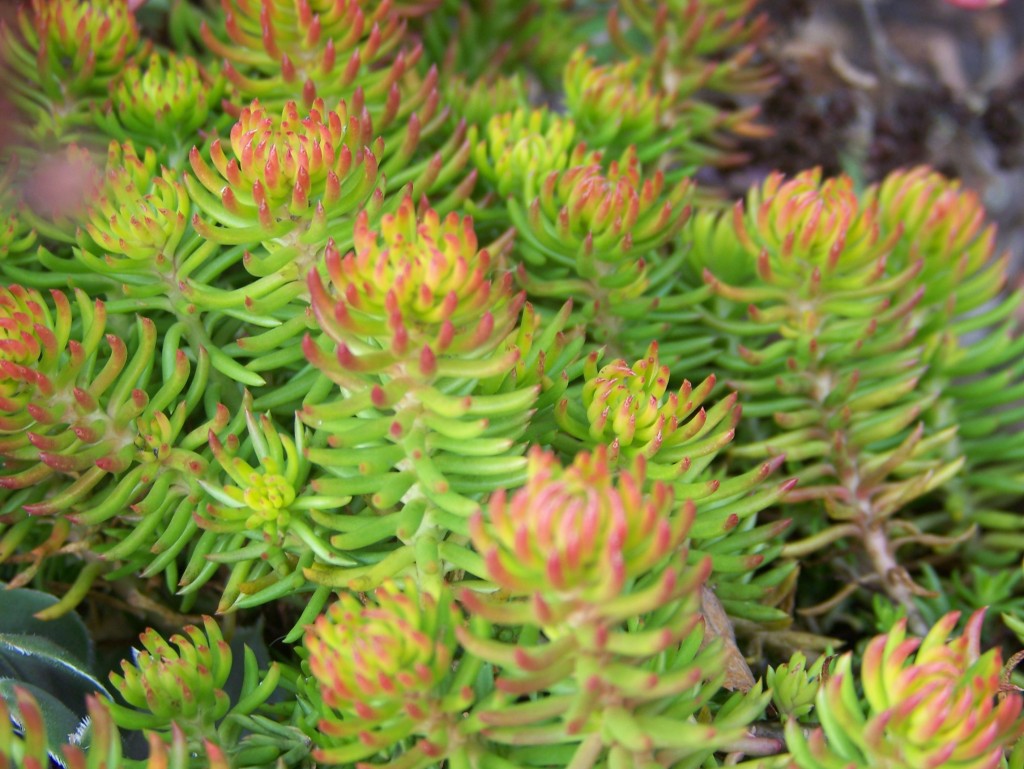
this gentain’s leaves are also showing off some fall burgundy while the flowers remain that stunning shade of blue.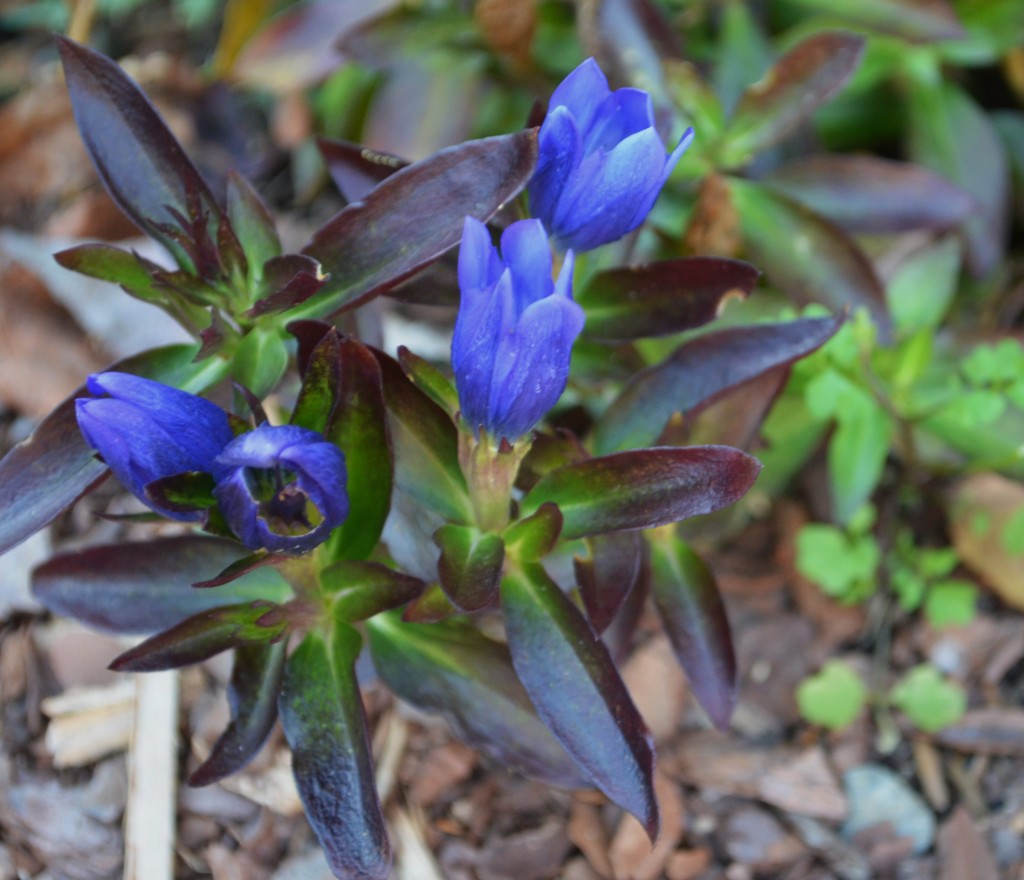
The peonies start to get reddish mottling in their leaves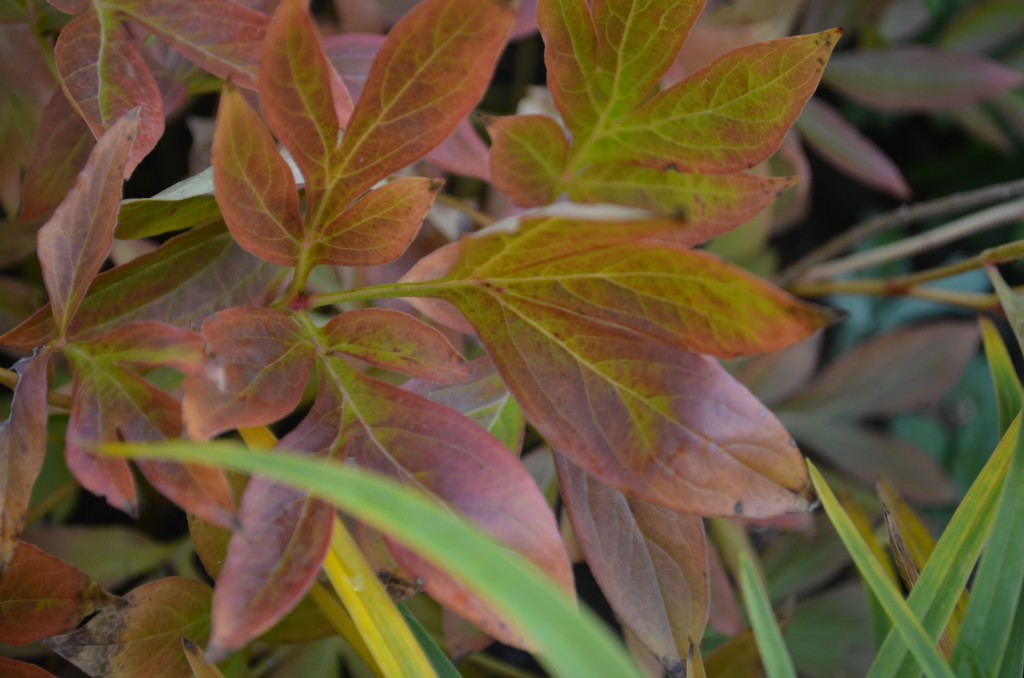
…and then there are the berries
Ilex verticillata ‘winter gold sports these orangey gems for quite a while until some flock of southward flying birds descends for a feats.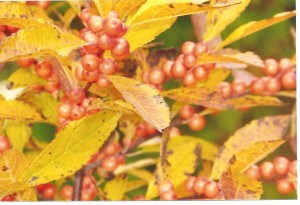
callicarpa holds it’s electric purple berries right through the winter, although the color will start to fade in late Jan
.
.
.
the hips on the roses are a delight.
,
,
,
,
,,
,
,
the blue berries of the dogwoods spark agaist the white of a sweet autumn clematis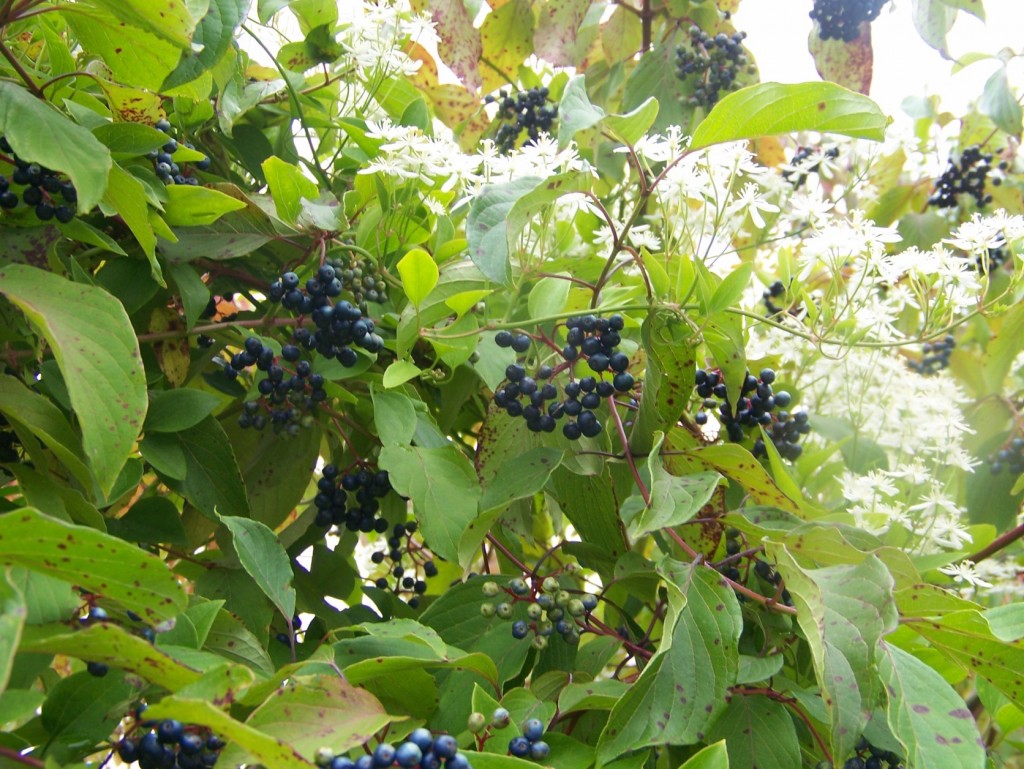
and the hollies and viburnums explode with red , the hollies for a few months , the viburnums for a few hours it seems as the birds devour their immedialty afetr they appear. ( hence no photo )
AND we still have roses in bloom both the drift called ‘Pink’ and the one called ‘Sweet’, pictured here as well as ‘Seafoam’, ‘Double Pink knockout’, and the two magic carpet varities ‘Amber’ and white.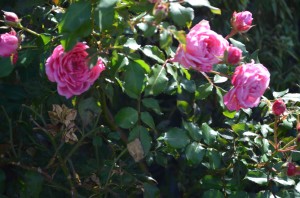
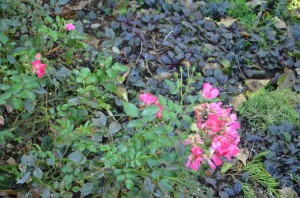
.
.
.
.
.
.
.
.as a HUGE bonus there are clematis in bloom too! here are ‘Ville de Lyon ‘ and ‘Pope John Paul II’ along with the beautiful foliage of the honeysuckle called ‘Harlequin’.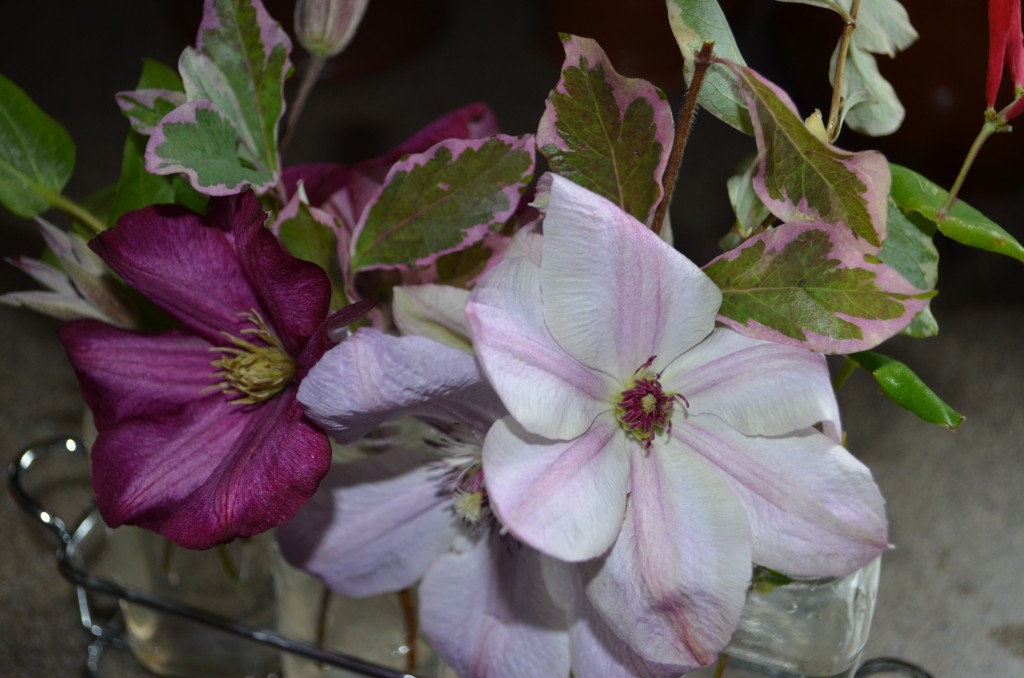
now, if I could get some MONEY to grow on the shrubs, that would be a trick for the ages!
